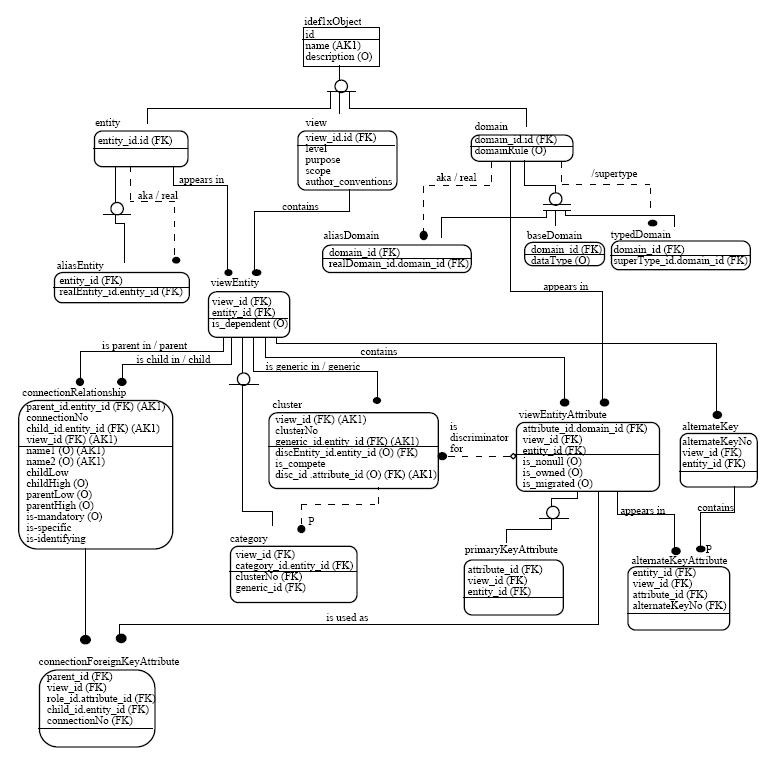【智財評析】2018年歐洲專利局審查基準改版 -- 關於資訊建模(information modelling)的可專利性
2018-12-25 劉致宏 專利代理人
歐洲專利局的歐洲專利審查基準的最新修改版已於2018年11月1日生效。其中關於資訊建模(information modelling) 的可專利性討論,新版的歐洲專利審查基準特別新增了G-II 3.6.2節討論可專利性的相關議題。以下簡單整理內容,以供在歐洲申請相關內容專利者參考。
關於資訊建模 (information modelling)
資訊建模指的是在軟體開發之前,程式設計師用來描述真實世界的物件或方法的方法。通常所建出的資訊模型,會包括真實世界物件的屬性、物件間的關係、或是物件會執行的功能等等。在建立模型之後,程式設計師會繼續基於所建立的模型建立各項對應的函數與物件,以便開發出整套軟體系統。下圖是維基百科所提供的資訊模型的例子:

歐洲專利審查基準修改內容概述
這次歐洲專利審查基準新增的內容,承接了過去歐洲專利局的實務見解,認為資訊建模是一種心智活動,並不具備技術特質 (technical character),因此不符合歐洲專利公約中關於發明的定義。例如,在2010年的T 354/07中,西門子公司的申請案請求了一種將泛用功能方塊圖轉換為特定平台的電腦程式的方法。技術上訴委員會認為,將功能方塊圖轉換成電腦程式是一種心智活動的概念,不具備技術特質。
在同年的另一件 T 1171/06案中,針對申請人Robert Bosch GMBH所請求的,一種將動力載具中的多元件機械電子系統建立成UML物件導向語言模型的方法與系統,上訴委員會也做出相同見解,認為其不具備技術特質。上訴委員會認為,
除了上述在新增的G-II 3.6.2提到的案件之外,另外值得注意的是2002年的T 49/99案。在此案中,申請人International Computers嘗試請求一種運用電腦執行物件導向資訊來對實體系統建模的方法,其特徵在於在建模的過程中,明確定義了物件資料庫的特定資料結構,以及物件之間的關聯性:
1. A method for modelling a physical system in a computer that executes an object-oriented information model based on the physical system, comprising the steps of:
(a) identifying physical elements in the system and their characteristics;
(b) deriving abstract objects and their attributes from the physical elements and their characteristics;
(c) defining relationships between objects;
(d) defining instances of the objects by assigning instance characteristics to the attributes; and
(e) creating an object type hierarchy within the objects, the objects lower in the hierarchy being subtypes of the objects higher in the hierarchy and inheriting attributes from the higher-level objects;
characterised in that
(f) a sub-set of the object types within said hierarchy are designated as base types;
(g) all objects, their attributes and the relationships between the objects are stored in tables with relational database technology, said tables including an object table and a plurality of type-specific tables, each type-specific table corresponding to a particular base type;
(h) said object table stores entries for objects of a plurality of different object types, each entry including attributes that are not specific to any particular object type; and
(i) said type-specific tables store attributes specific to their respective base types.
這個資訊建模相關的請求項,被上訴委員會認定為不符合發明的定義。值得注意的,是上訴委員會在決定理由 (Reasons for the Decision) 的第7段,明確指出資訊建模在哪種情況下不符合歐洲專利公約第52條關於發明的定義,哪種情況下則會符合:
Although information modelling embodies useful concepts and methods in developing complex software systems, it is as such an intellectual activity having all traits typical for non-technical branches of knowledge and thus being closely analogous to the non-inventions listed under Article 52(2)(a) and (c) EPC.
In examining inventive step, it should hence be treated like any other human activity in a non-technical field, which is, as such, not an invention for the purposes of Article 52(1) EPC. Only the purposive use of information modelling in the context of a solution to a technical problem, as e.g. is the case for the preferred embodiment relating to the control and management of technical processes in a power system, may contribute to the technical character of an invention.
依此見解,資訊建模的方法本身 (比如本案的請求項),或是建出的資訊模型本身,會被認定是智力活動,而被類比為歐洲專利公約第52條所列出的發明除外項目。然而,如果所請求的是資訊建模在解決某種技術問題的應用,(比如本案說明書的實施例中提到的,動力系統中的控制與管理的技術性方法,但這點在請求項中並沒有提到),則資訊建模有可能被認為對技術特質有所貢獻,進而不會被列入發明除外項目。
實務建議
依據新修改的歐洲專利審查基準,如果請求項中,只請求資訊建模方法本身,或是只請求所建出的資訊模型,則即使說明書中有提到資訊建模的技術目的,也無法符合歐洲專利公約52條的發明定義。然而,如果從請求項中可看出資訊建模被用於解決特定的技術問題,那麼就有可能被認為具備技術特質,進而符合發明的定義。
關於這點,其實跟運用數學建模方法解決技術問題非常類似。關於運用數學建模方法的可專利性,可參考G-II, 3.3.2的進一步說明,也歡迎參考之前我們也整理過的,歐洲審查基準關於數學方法中的模擬、設計與建模方法的可專利性判斷的最新規定。
需要注意的是,美國法院關於資訊模型可專利性的實務見解,與歐洲並不盡相同。美國聯邦巡迴上訴法院在2016年的Enfish案 (Enfish, LLC v. Microsoft Corp., 822 F.3d 1327 (Fed. Cir. 2016)) 中,認為資料庫的自參照資料表本身,是可專利標的。這個案子的重點,是請求項只請求了自參照資料表,也就是只請求了資訊模型本身:
實務建議
依據新修改的歐洲專利審查基準,如果請求項中,只請求資訊建模方法本身,或是只請求所建出的資訊模型,則即使說明書中有提到資訊建模的技術目的,也無法符合歐洲專利公約52條的發明定義。然而,如果從請求項中可看出資訊建模被用於解決特定的技術問題,那麼就有可能被認為具備技術特質,進而符合發明的定義。
關於這點,其實跟運用數學建模方法解決技術問題非常類似。關於運用數學建模方法的可專利性,可參考G-II, 3.3.2的進一步說明,也歡迎參考之前我們也整理過的,歐洲審查基準關於數學方法中的模擬、設計與建模方法的可專利性判斷的最新規定。
需要注意的是,美國法院關於資訊模型可專利性的實務見解,與歐洲並不盡相同。美國聯邦巡迴上訴法院在2016年的Enfish案 (Enfish, LLC v. Microsoft Corp., 822 F.3d 1327 (Fed. Cir. 2016)) 中,認為資料庫的自參照資料表本身,是可專利標的。這個案子的重點,是請求項只請求了自參照資料表,也就是只請求了資訊模型本身:
A data storage and retrieval system for a computer memory, comprising:
means for configuring said memory according to a logical table, said logical table including:
a plurality of logical rows, each said logical row including an object identification number (OID) to identify each said logical row, each said logical row corresponding to a record of information;
a plurality of logical columns intersecting said plurality of logical rows to define a plurality of logical cells, each said logical column including an OID to identify each said logical column; and
means for indexing data stored in said table.
上訴法院的法官在審酌整份專利說明書之後,推翻了下級法院認為請求項是抽象概念的見解,認為由於說明書中解釋了請求項所請求的資料模型的技術功效,因此這個請求項不僅是抽象改念。與前述歐洲的T 49/99案相比,美國的Enfish案的請求項也是請求資訊模型本身,但結果卻天差地遠。由此可看出美國與歐洲關於資訊建模相關的發明在實務認定上的差異。
因此,關於資訊建模,在撰寫請求項時,需要注意以下兩點:
- 在申請歐洲時,建議把說明書提到的,數據建模所解決的技術問題以及技術效果,直接寫在請求項中,以避免歐洲專利局認為請求項僅涉及資訊建模方法或資訊模型本身,而不符合發明的定義。
- 相同的內容在申請美國時,可以嘗試在請求項中直接請求資訊模型本身,並將說明書中提到的所解決的技術問題以及技術效果,當地連結到請求項的特定技術內容即可。
延伸閱讀:
-
2018-11-06
-
2018-11-02
消息來源:


